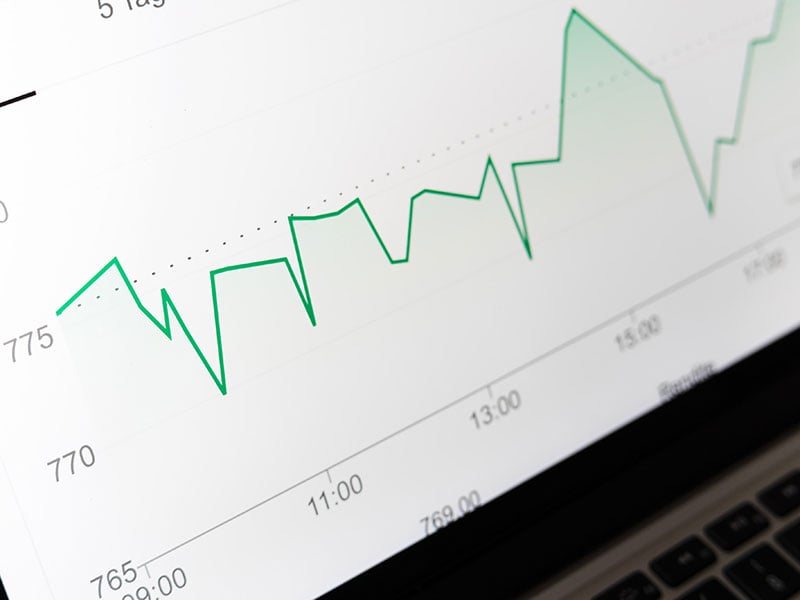Table of Contents
Optimising your marketing communication using data, metrics and KPIs
Your actions – and those of your users – produce more data today than ever before, and you can use this to your advantage to create relevant marketing materials. But how?
You know as well as I do that the market is constantly evolving. The environment that surrounds us is always changing; something that worked brilliantly yesterday may no longer apply today, and vice versa.
There’s no crystal ball to predict what will happen in the future and ensure you don’t make any mistakes. However, you can look at the situation from above, position yourself ideally for your target market (analysis), identify the best route to take (strategy) and act effectively and efficiently (operations). Marketing works like a compass, allowing you to find your way in even the most complex and unpredictable of contexts.
But to successfully reach your destination, you need the help of data – and that involves gathering it, processing it and turning it into useful information.
Data galore and the importance of metrics
It is undeniably true that businesses today have a huge advantage compared to the past in terms of the amount of data available. However, although the data is widely available, there is little information out there on:
- which metrics to monitor;
- what to measure;
- how to map scenarios;
- where to start;
- how to order your thoughts.
Choosing metrics is no easy matter: opting for one over another can have unintended consequences.
Instead, it is very easy to fall in love with vanity metrics, the numbers that continue to rise and make you feel good, even though in reality they don’t help you make tangible decisions that have a real impact on your performance. Vanity metrics include website hits, page views, visitor numbers, the number of followers or likes you have on social media, emails received or even the number of times a piece of content has been downloaded (an audio file, for example).
The most important criterion for a good metric is that it changes and shapes the way you act. But it should also:
- answer the questions posed in the previous stage of analysis;
- force you to set clear targets for achieving success;
- encourage the entire business to keep focusing on a limited number of key elements;
- inspire a culture of experimentation and push you to get into the ‘build, measure, learn’ cycle as quickly as possible, so you learn from small mistakes and avoid bigger ones.

Regardless of how effective they are, metrics must stand the test of time and withstand changes to your operations. At a certain point you will reach a crossroads: if you don’t have enough useful data you won’t be able to continue with the action, and so the metric will have to be removed. If, however, the analysis has been effective, it will lead to improvement. It is important to subject metrics to this test periodically to work out which bring value to the business (to keep) and which are useless (to be eliminated).
What data is actually valuable to my business?
Up to now we’ve stuck to the word ‘metrics’, but in the world of marketing this concept is frequently confused with Key Performance Indicators (KPIs). With this in mind, let’s have a good look at the differences between them.
In its simplest form, a metric is simply a measurement used to keep track of the success or failure of certain aspects of a business’ performance.
Metrics are quantifiable, allow results to be reported promptly, and show whether the business’ actions are making progress towards a pre-established target.
KPIs are measurements too. Like metrics, they must be very clearly defined and quantifiable. The difference is that these types of measurements refer to a specific strategic goal and reflect the business’ success at achieving it.
Now let’s dive into the specifics, and highlight some of the metrics you can analyse to improve your business’ performance. In his book Data-Driven Marketing, Mark Jeffrey divides them up into three categories: a) non-financial, b) financial, and c) customer-related and internet marketing metrics. Let’s look at each of these in more detail.
Focus: non-financial metrics
Non-financial metrics include:
- brand awareness: used to monitor people’s knowledge of a brand and the impact of marketing, as a strong brand influences consumers’ decision-making when making a purchase and allows businesses to charge a premium price;
- test drive: analyses how many people buy a product from a limited number of samples;
- churn rate: a loyalty metric that measures how many customers abandon the brand. It can have a profound impact on a business’ profitability.
- CSAT (customer satisfaction): connects branding and customer loyalty;
- take rate: this measures the percentage of people who listen to your campaign’s offer and accept it.

Focus: financial metrics
Finance is the language of business: mastering it is fundamental if you want to understand its mechanisms and communicate successfully with all levels of the business.
The main metric you need to know in this sector is ROI (return on investment), the cost-to-benefit ratio that establishes whether a marketing activity was truly effective. However, the classic definition has two major issues, both related to the variable of time.
- Firstly, ROI cannot be considered a constant, as it is well known that economic and financial resources lose value as the years progress.
- The second issue concerns the period under consideration. For example, you could have 100% ROI for both a nine-month and a three-year campaign. The value is the same, but the campaigns are completely different.
The way around these issues is to combine three financial metrics:
- NPV (net present value): the profit minus the cost for each time period, taking into account the value of money over time;
- IRR (internal rate of return): a way of measuring the profitability of any economic activity. You can use it to take informed decisions on whether or not it’s worth embarking on a project;
- payback: the time required for the profit to equal the money invested (in a marketing campaign, for example).

Focus: customer-related and internet marketing metrics
Finally, let’s look at the internet marketing metrics used to monitor online activities. Here are the most common:
- CPC (cost per click): calculates the cost of each click on a sponsored search link or banner ad;
- TCR (transaction conversion rate): calculates the percentage of customers who make a purchase after clicking on your website;
- ROA (return on ad dollars spent): measures net profit-making efficiency from advertising investment where the final action is acquiring a product or service;
- bounce rate: an essential metric for understanding how effective a website is, allowing you to assess whether the content attracts customers’ attention or immediately frightens them off, and to determine which marketing channels work best.
Useful tools for keeping track of KPIs
Understanding metrics and KPIs is the essential entry point into the world of analysis. It’s now time for you to test and extract value from all the data which, whether or not you are aware of it, your business is generating. To help you, here’s a list of some web analytics tools to get you started.
- Google Analytics: the best-known web analytics system in the world. Because it’s so widely used, it’s constantly being improved, with new features added. It’s free, and there’s tonnes of information and guides available on how to take full advantage of it. However, it’s not suited to all applications. Google Analytics places a great deal of emphasis on search engine optimisation (SEO) and ad performance, but it’s not so good at assessing customer behaviour. If you want to learn to use it like a pro, Google has created an entire Academy dedicated to it!
- Clicky: this tool keeps track of website use, and can generate heatmaps (coloured graphics that display people’s behaviour by highlighting the areas where people online focus their attention), both for individuals and for groups of users. There are various paid plans for monitoring websites with large numbers of page views, but the free version is the perfect starting point, working up to a maximum of 3,000 views.
- Open Web Analytics (OWA): this free and open-source tool provides all the metrics you would expect from an analysis platform, including referring sites, page views and unique visitors. OWA can also track click flows and produce heatmaps. Using this data, you can build a detailed profile of how visitors interact with your pages, and use this data to increase conversion rates by identifying visitors’ pathways and actions before they turn into conversions.
- Crazyegg: with a basic plan costing $29/month, this website optimisation tool focuses in particular on conversion rates and analysing interactions with pages. There are also specific tools relating to conversion funnel analysis and setting up A/B tests.
Now we’ve given you the definitions, examples and tools you need, you have no excuse not to get started on optimising your business marketing using data, numbers and KPIs!

